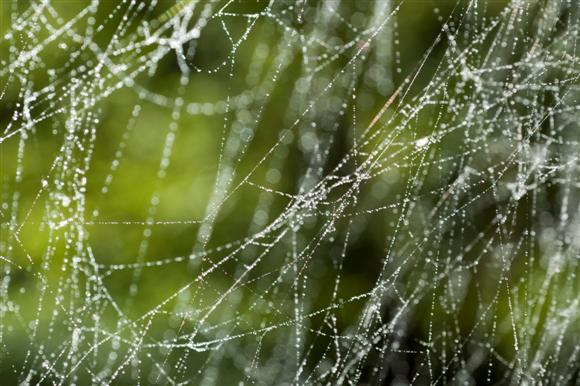Lessons Learned From Storytelling With A Shawnee Indian
 Before visiting Hocking Hills, Ohio, I wasn’t quite sure what to expect. While I’d heard the state was flat with not much to do, I also heard there were some quirky and adventurous activities to be experienced. After visiting for myself, the latter view won by a landslide.
One that really piqued my interest was a hike with Hocking Hills Adventure Trek that started with an informative forest and cave hike, and ended in a session of storytelling led by Wehyehpihehrsehnhwah, a native Shawnee Indian. While I knew the journey would be interesting, I didn’t realize what a live-changing affect it would have on me.
[pullquote]At first Wehyehpihehrsehnhwah speaks his native language until he realizes we don’t understand him.[/pullquote]
It’s odd that with 100 miles of hiking trails, not many people know about Saltpetre Caves Nature Preserve. That’s one of the reasons company owner Jim Stratton and naturalist guide Joe Brehm love to lead their tours here. We walk through Hemlock, White Oak, Greenbrier, mushrooms and the fun-to-say, Sassafras, which is known for its medicinal purposes as well as being an additive to beer. We shimmy through slots and caves, walk by lichen-covered trees and honeycombed sandstone, learning about local flora and fauna until we see a man dressed in a traditional pullover linen shirt with deer hyde leggings and a finger-weaved belt. At first Wehyehpihehrsehnhwah speaks his native language until he realizes we don’t understand him.
“I mean no harm,” he says. “Come in.”
[pullquote]The three sisters may be very different, but by working together they thrive.[/pullquote]
We approach the cave dwelling and sit around the Shawnee man awaiting his stories. He begins talking about the times before highways and electricity. When the people of the Shawnee were related by their unity of their village, and everyone worked together to survive. He told us of Tecumseh, a famous Shawnee Indian, how the village didn’t have a class system and the importance of the “three sisters,” corn, beans and squash. You see, these vegetables are more than just food, they’re teachers. When the corn grows, it provides a stalk for the beans to wind up. In return, the bean plants stabilize the corn, as well as add healthy nitrogen to the soil. Additionally, the squash at the bottom of the stalk produce a giant leaf that acts as shade for the plant’s roots. On the leaf, you’ll also find a sharp pricker, perfect for protecting the “siblings” from hungry raccoons. The three sisters may be very different, but by working together they thrive.
“A long time ago, The Creator made everything,” explained Wehyehpihehrsehnhwah. “All the creatures could communicate because they were one.”
Before visiting Hocking Hills, Ohio, I wasn’t quite sure what to expect. While I’d heard the state was flat with not much to do, I also heard there were some quirky and adventurous activities to be experienced. After visiting for myself, the latter view won by a landslide.
One that really piqued my interest was a hike with Hocking Hills Adventure Trek that started with an informative forest and cave hike, and ended in a session of storytelling led by Wehyehpihehrsehnhwah, a native Shawnee Indian. While I knew the journey would be interesting, I didn’t realize what a live-changing affect it would have on me.
[pullquote]At first Wehyehpihehrsehnhwah speaks his native language until he realizes we don’t understand him.[/pullquote]
It’s odd that with 100 miles of hiking trails, not many people know about Saltpetre Caves Nature Preserve. That’s one of the reasons company owner Jim Stratton and naturalist guide Joe Brehm love to lead their tours here. We walk through Hemlock, White Oak, Greenbrier, mushrooms and the fun-to-say, Sassafras, which is known for its medicinal purposes as well as being an additive to beer. We shimmy through slots and caves, walk by lichen-covered trees and honeycombed sandstone, learning about local flora and fauna until we see a man dressed in a traditional pullover linen shirt with deer hyde leggings and a finger-weaved belt. At first Wehyehpihehrsehnhwah speaks his native language until he realizes we don’t understand him.
“I mean no harm,” he says. “Come in.”
[pullquote]The three sisters may be very different, but by working together they thrive.[/pullquote]
We approach the cave dwelling and sit around the Shawnee man awaiting his stories. He begins talking about the times before highways and electricity. When the people of the Shawnee were related by their unity of their village, and everyone worked together to survive. He told us of Tecumseh, a famous Shawnee Indian, how the village didn’t have a class system and the importance of the “three sisters,” corn, beans and squash. You see, these vegetables are more than just food, they’re teachers. When the corn grows, it provides a stalk for the beans to wind up. In return, the bean plants stabilize the corn, as well as add healthy nitrogen to the soil. Additionally, the squash at the bottom of the stalk produce a giant leaf that acts as shade for the plant’s roots. On the leaf, you’ll also find a sharp pricker, perfect for protecting the “siblings” from hungry raccoons. The three sisters may be very different, but by working together they thrive.
“A long time ago, The Creator made everything,” explained Wehyehpihehrsehnhwah. “All the creatures could communicate because they were one.”

Image via GretheB

Image via valjau86

Hi, I’m Jessie on a journey!
I'm a conscious solo traveler on a mission to take you beyond the guidebook to inspire you to live your best life through travel. Come join me!

Want to live your best life through travel?
Subscribe for FREE access to my library of fun blogging worksheets and learn how to get paid to travel more!


Dig the candor. Didn’t your cell phone try to free you of itself?
Ugh yes! I believe it was a sign that I need to relax with the technology! ha